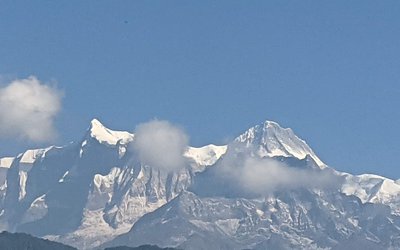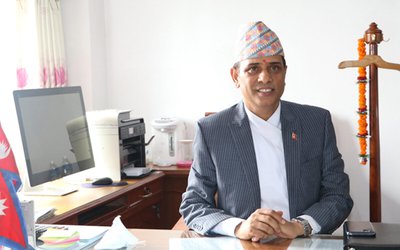The World Bank is scaling up its efforts in Nepal at helping authorities and communities improve the nutritional status of the country’s most vulnerable populations. This is one of the first World Bank assisted multi sector nutrition project in the South Asia region which will engage a wide range of actors across government and civil society in the areas of health, poverty reduction, social protection, water and sanitation, agriculture, local development and education in the planning and implementation.
The Sunaula Hazar Din project – translated from Nepali to English to mean the “golden 1,000 days project” – will target risk factors that affect the nutritional status of children in the first two years of their lives. The World Bank Board of Executive Directors approved US$ 40 million in grant and credit for this new project today to complement Nepal’s ongoing programs in nutrition.
Nutrition experts worldwide have determined that the window of opportunity for improving nutrition is small, i.e., the first 1,000 days from the first day of pregnancy through the first two years of life. The damage that might occur due to inadequate nutrition during this period is extensive and largely irreversible.
The main focus of this project will be to accelerate the reduction of maternal and child under-nutrition, as measured by anemia among pregnant women, low birth rate and young child stunting.
“The high rates of under nutrition – nearly two in every five Nepali children under the age of five are stunted with nearly a third underweight – require urgent and coordinated action by multiple institutions to attack this silent killer,” says Tahseen Sayed, the World Bank Country Manager for Nepal. “We are delighted to support this multi-sector nutrition project, one of the first of its kind in the South Asia Region, which brings together multiple stakeholders at the central and local levels to improve the nutritional outcomes of women and children,” she says.
Together with the rest of South Asia, Nepal has made good progress in other human development indicators such as school enrolments, gender parity in school participation, immunization coverage, infant and under five mortality rates, and fertility rates. However, when it comes to nutrition, all the countries in the region, including Nepal, have fallen behind.
“If not addressed during the first few years of life, under nourishment can cause permanent disability in children, loss of height during adolescence, poor grades in school, increase in school drop-outs and reduction in life-time earnings,” says Albertus Voetberg, World Bank Task Team Leader for the project. “The social and economic costs to nations are huge,” he says.
Earlier this month in Kathmandu, the World Bank organized a Knowledge Forum where nearly 200 leading nutrition experts and practitioners from governments, civil society organizations development partners across the South Asia region shared lessons and experiences in improving infant and young child nutrition.
- TANAHU HYDROPOWER PROEJCT: A Significant Achievement
- Apr 15, 2024
- AMBASSADOR HANAN GODAR: Sharing Pain With A Nepali Family
- Mar 30, 2024
- VISIT OF KfW AND EIB TO NEPAL : Mission Matters
- Mar 25, 2024
- NEPAL BRITAIN SOCIETY: Pratima Pande's Leadership
- Mar 24, 2024
- NEPAL ARMY DAY: Time To Recall Glory
- Mar 15, 2024
















